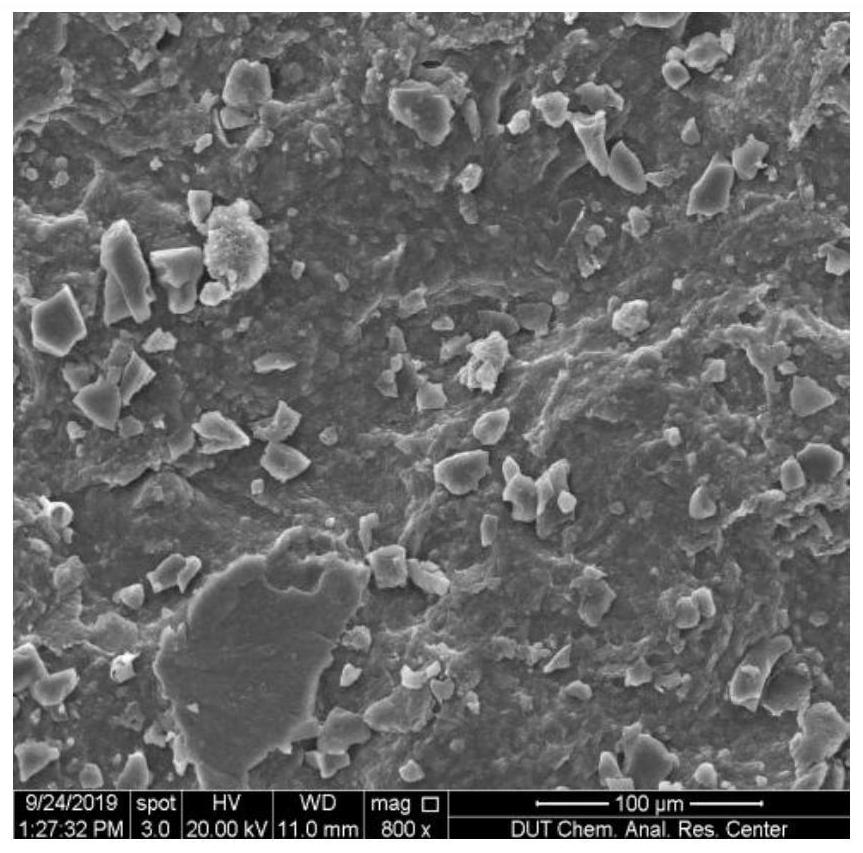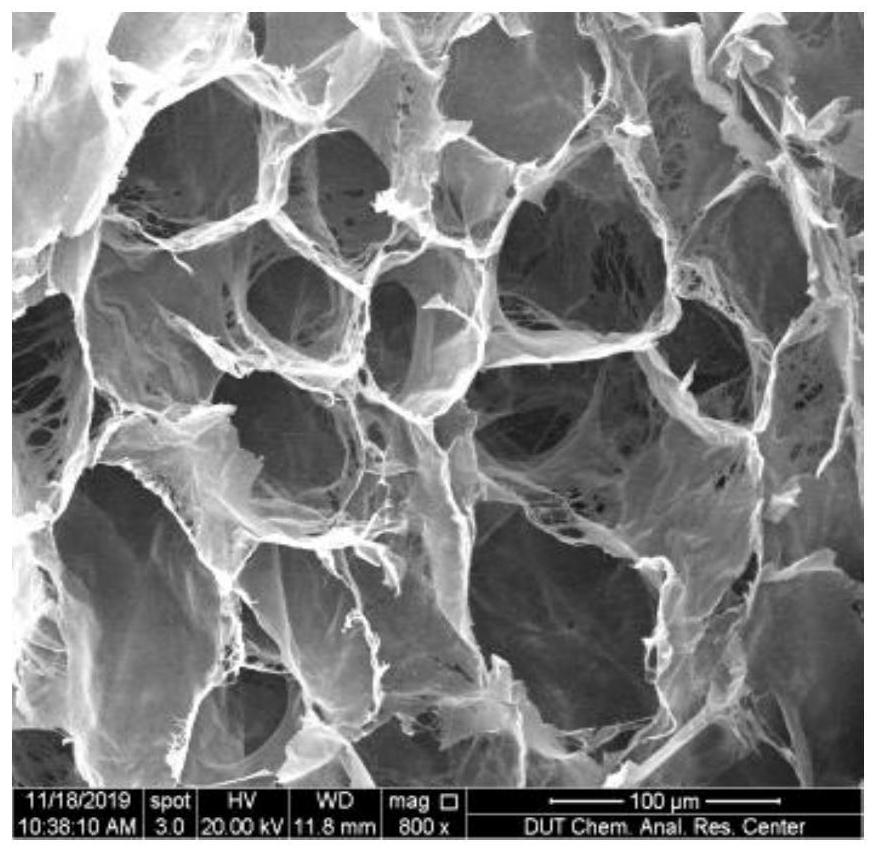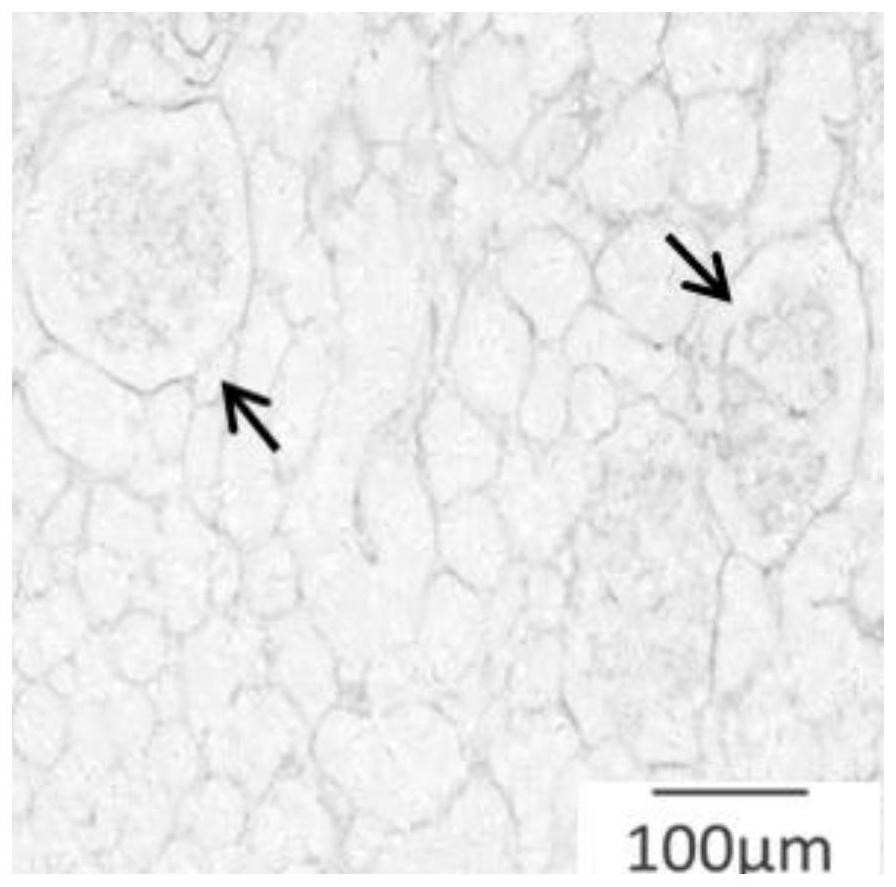Construction method of three-dimensional tumor model acellular derived matrix stent and application thereof
A technology of acellular matrix and construction method, which is applied in the field of construction of three-dimensional tumor model acellular porous scaffold, which can solve the problems of lack of flexibility in operation
- Summary
- Abstract
- Description
- Claims
- Application Information
AI Technical Summary
Problems solved by technology
Method used
Image
Examples
Embodiment example 1
[0051] Implementation Case 1 Cross-linking and performance testing of porcine kidney-derived decellularized three-dimensional tumor model scaffold
[0052] (1) Take fresh pig kidneys from the market, wash them with water until the water has no obvious blood color, and put the washed pig kidneys in a refrigerator at -25°C for 12 hours.
[0053] (2) After it is frozen and formed, cut the pig kidney into two pieces, and remove the pig’s renal pelvis and renal fibrous capsule, and then cut the remaining kidney into a volume of 13cm 3 of small pieces.
[0054] (3) At room temperature, soak and wash the cut kidney pieces in phosphate (PBS) buffer solution with pH=7.4, and change the solution every 30 minutes for 3 times to remove blood streaks and Remove fishy smell. The cleaning process is under the action of a magnetic stirrer, in order not to damage the structure of the pig kidney small pieces, low-speed stirring is used, and the stirring rate is 8rpm.
[0055] (4) At room tem...
Embodiment example 2
[0061] Implementation Case 2 Cross-linking and performance testing of porcine kidney-derived decellularized three-dimensional tumor model scaffold
[0062] (1) Take fresh pig kidneys from the market, wash them with water until the water has no obvious blood color, and put the washed pig kidneys in a refrigerator at -30°C for 14 hours.
[0063] (2) After it is frozen and formed, cut the pig kidney into two pieces, and remove the pig’s renal pelvis and renal fibrous capsule, and then cut the remaining kidney into a volume of 16cm 3 of small pieces.
[0064] (3) At room temperature, soak and wash the cut kidney pieces in phosphate (PBS) buffer solution with pH = 7.4, and change the solution every 30 minutes for 4 times to remove blood streaks and Remove fishy smell. In the cleaning process, under the action of a magnetic stirrer, in order not to damage the structure of the small pieces of pig kidney, low-speed stirring was used, and the stirring rate was 15 rpm.
[0065] (4) A...
Embodiment 3
[0070] Example 3 Porcine Kidney Derived Acellular Matrix Scaffold as a Tumor Model
[0071] Take the cross-linked porcine kidney-derived acellular-derived matrix scaffold, cut off the dense outer layer on its surface with a blade, and cut into a regular scaffold with a length × width × height of 5mm × 5mm × 2mm, respectively, in order to control the variable of the scaffold volume. Better comparison of cell growth and tumor model construction under different variables of our experiments. Put the treated cross-linked scaffold into a 6-well plate filled with 75% alcohol and soak for 3 times, then replace the alcohol and put it into a sterilization table for ultraviolet sterilization overnight. After soaking in PBS for 3 hours, add DMEM medium to infiltrate, and air-dry in an ultra-clean bench. After all sterilization steps were completed, the medium was sucked away, and MCF-7 cells were inoculated for 21 days.
[0072] MCF-7 cells were inoculated on porcine kidney-derived dece...
PUM
 Login to View More
Login to View More Abstract
Description
Claims
Application Information
 Login to View More
Login to View More - R&D
- Intellectual Property
- Life Sciences
- Materials
- Tech Scout
- Unparalleled Data Quality
- Higher Quality Content
- 60% Fewer Hallucinations
Browse by: Latest US Patents, China's latest patents, Technical Efficacy Thesaurus, Application Domain, Technology Topic, Popular Technical Reports.
© 2025 PatSnap. All rights reserved.Legal|Privacy policy|Modern Slavery Act Transparency Statement|Sitemap|About US| Contact US: help@patsnap.com



